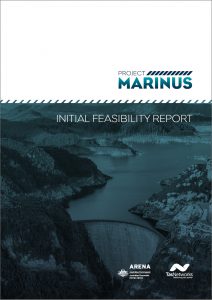The Tasmanian Government, with support from the Commonwealth Government through the Australian Renewable Energy Agency, asked TasNetworks to assess the feasibility and business case for a second Bass Strait interconnector.

The current assessment builds on the 2017 report by Dr John Tamblyn, Feasibility of a Tasmanian Second Interconnector – Final Study commissioned by the Tasmania and Commonwealth Governments. Dr Tamblyn recommended that more detailed study be undertaken when one or more preconditions were met, that are now eventuating. Work undertaken by Hydro Tasmania with ARENA funding support highlights Tasmania’s potential to become Australia’s renewable energy battery, and the Australian Energy Market Operator has developed the first Integrated System Plan for the National Electricity Market, with interconnection playing a key role.
The work underway has two main reports that consider feasibility of the project, and whether it is likely to have a viable business case. The process includes a regulatory assessment, under the regulatory investment test for transmission (the RIT-T), to assess whether or not customers in the NEM are better off with Marinus Link.
You can download the Fact Sheet, Overview, Initial Feasibility Report, and Appendices (.pdfs) here:
Initial Feasibilty Report – Fact Sheet
Initial Feasibility Report – Overview
Initial Feasibility Report
Initial Feasibility Report – Appendice
Please provide your feedback to us by 29 March 2019 via projectmarinus@tasnetworks.com.au
The Tasmanian Government has also released a Current Situation Assessment paper in relation to Marinus Link and Battery of the Nation. The Situation Assessment takes into account a range of recent publications on Australia’s energy future and Tasmania’s role in it, including Project Marinus’s Initial Feasibility Report, Hydro Tasmania’s Analysis of the Future National Electricity Market and the work of the COAG Energy Council and national market bodies including the inaugural Integrated System Plan.